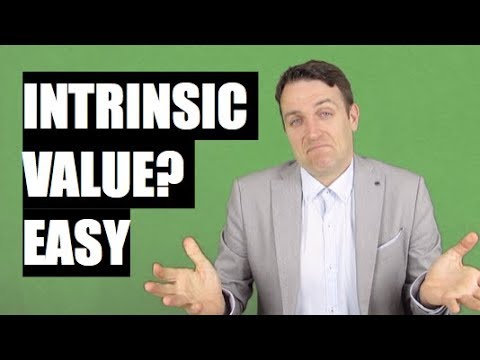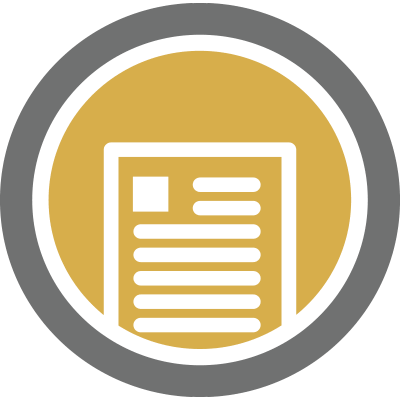Contents
One simple method to think about the cost of equity is that it signifies the opportunity cost of investing in the equity of a specific company. The Equity Risk PremiumEquity Risk Premium is the expectation of an investor other than the risk-free rate of return. This additional return is over and above the risk free return. Capital Asset Pricing ModelThe Capital Asset Pricing Model defines the expected return from a portfolio of various securities with varying degrees of risk. It also considers the volatility of a particular security in relation to the market. Dividend GrowthDividend Growth is defined as a significant rise in a company’s dividend payout to its shareholders from one period of time to another in comparison to the dividend payout of the previous period of time .
Investments that have risk-free rates include government bonds and treasury bills. Investors – The cost of equity is the rate of return demanded by investors. When a company decides to issue new shares to investors, it is sacrificing the profits that are owed to the existing shareholders.

Other formulas are used to derive the components that will be used in that single formula. So calculating the Cost of Equity that is being implied by the market price shouldn’t really be that difficult. Since growth rate is an important component of this formula, we need to ensure that we are using the correct growth rate. The value will always be cheaper because it takes a weighted average of the equity and debt rates .
What is the Cost of Equity Capital Formula?
Individuals and organizations who are willing to provide their funds to others naturally desire to be rewarded. Just as landlords seek rents on their property, capital providers seek returns on their funds, which must be commensurate with the risk undertaken. Cost Of DebtCost of debt is the expected rate of return for the debt holder and is usually calculated as the effective interest rate applicable to a firms liability. It is an integral part of the discounted valuation analysis which calculates the present value of a firm by discounting future cash flows by the expected rate of return to its equity and debt holders. Sometimes you might be interested in finding the unlevered/ungeared cost of equity.

If the risk is lower with another company, they will choose to invest elsewhere. Cost of Equity is the rate of return a company pays out to equity investors. A firm uses cost of equity to assess the relative attractiveness of investments, including both internal projects and external acquisition opportunities. Companies typically use a combination of equity and debt financing, with equity capital being more expensive. Publicly-listed companies can raise capital by borrowing money or selling ownership shares.
Cost of Equity definition
It’s simply the latest share price multiplied by the total number of shares outstanding. The cost of equity is therefore “inferred” by comparing the investment to other investments with similar risk profiles to determine the market cost of equity. The Profit After Tax of a business will define the money that is available for distribution to the shareholders.
The rate the company needs to generate to allure the investors to invest in their stock at the market price. Currently, Berry Juice Private Limited has decided to pay US $2 per share as a dividend. And Mr. C expects that the appreciation in the dividend would be around 4% (a guess based on the previous year’s data). First, we will use the usual model, which has been used by the investors repeatedly.
The action you just performed triggered the security solution. There are several actions that could trigger this block including submitting a certain word or phrase, a SQL command or malformed data. Posco has the lowest Ke among these companies at 8.2% and a beta of 1.01. Please note that Risk-Free Rate and Market Premium are the same for all the companies.
While a firm’s present cost of debt is relatively easy to determine from observation of interest rates in the capital markets, its current cost of equity is unobservable and must be estimated. Finance theory and practice offers various models for estimating a particular firm’s cost of equity such as the capital asset pricing model, or CAPM. Another method is derived from the Gordon Model, which is a discounted cash flow model based on dividend returns and eventual capital return from the sale of the investment.
If the investment in question does not earn dividends, you must use the CAPM formula, which is based on estimates about the company and stock market. Beta is a statistical measure of a company’s stock price variability concerning the stock market overall. So if the company has a high beta, that means the company has more risk, and thus, the company needs to pay more to attract investors. cost of equity meaning But in the case of a levered DCF model, the cost of equity would actually be the correct cost of capital to discount the levered FCFs, as it captures the risk and expected returns to only equity holders. If you’re building an unlevered discounted cash flow model, the weighted average cost of capital is the appropriate cost of capital to use when discounting the unlevered free cash flows.
- This percentage is based upon the market rate of return for similar investments and the additional risks unique to the specific company.
- A stable, well-performing company generally will have a lower cost of capital.
- It is more difficult to calculate the cost of equity since the required rate of returnfor stockholders is less clearly defined.
- The cost of equity refers to two separate concepts, depending on the party involved.
- The name might be confusing for some people because the Cost of Equity Capital is not exactly a cost for the company.
The Capital Asset Pricing Model helps to calculate investment risk and what return on investment an investor should expect. Cost of equity is the return that a company requires for an investment or project, or the return that an individual requires for an equity investment. Company – A company’s expected return on a prospective project or business opportunity. Cost of Services is FASC’s total Operating Costs incurred in providing the applicable Category of Services during the month to all investment advisers for which FASC provides that Category of Services. The value of liabilities is the sum of each current and non-current liability on the balance sheet.
The downside of the dividend capitalization model—despite being simpler and easier to calculate—is that it requires that the company pays a dividend. Cost of Goods means the cost to ICN or Schering, as the case may be, of Products shipped in finished bulk capsules. In finance, equity is typically expressed as a market value, which may be materially higher or lower than the book value. The reason for this difference is that accounting statements are backward-looking while financial analysts look forward, to the future, to forecast what they believe financial performance will be. Now, instead of randomly choosing the values to calculate the Cost of Equity for the future, the company could use INR 29.60 as the Dividend amount and 4 % as the growth rate for the future. The name might be confusing for some people because the Cost of Equity Capital is not exactly a cost for the company.
Related Definitions
Below are the dividend amounts paid every year by a company that has been operating for five years. The reason we titled each case as “Base”, “Upside”, and “Downside” is that we deliberately adjusted each of the assumptions in a direction that would either increase or decrease the cost of equity. Initially, as the proportion of debt in the capital structure increases, WACC gradually decreases due to the tax-deductibility of interest expense (i.e., the “tax shield” benefits). As a general rule, the higher the beta, the higher the cost of equity . The risk-free rate typically refers to the yield on default-free, long-term government securities. So, the cost of equity for companies X, Y, and Z comes to 7.44%, 6.93%, and 8.20%, respectively.

Cost of Equitymeans the product of Average Shareholders’ Equity and 8.8%, which is the sum of the 3.3% yield on the 10-year Treasury Notes as of December 31, 2010, as published by the U.S. This is a very subjective process, and two different professionals can arrive at dramatically different values for the same business. Add cost of equity to one of your lists below, or create a new one. So, in order to perform better calculations, the past performance of the company can be used as a base for making the assumptions.
What is Cost of Equity?
Common liability accounts include lines of credit, accounts payable, short-term debt, deferred revenue, long-term debt, capital leases, and any fixed financial commitment. So, this will generate a loss for the existing shareholders unless the company manages to grow the profits to more than INR 1 crore by using the funds that were raised by issuing the 5,000 shares. This is the main reason why the funds obtained by issuing of new shares are not free of cost. Firstly, we could just calculate what the growth rate has been in the past. We can understand the trend and then use the same growth rate assuming that what happened in the past will continue in the future. We have derived a formula which tells us an estimate of what is the cost of equity that is being demanded from this company by the market.
The yield on government bonds can be found on various news sources – for example, the front page of the Wall Street Journal . DisclaimerAll content on this website, including dictionary, thesaurus, literature, geography, and other reference data is for informational purposes only. This information should not be considered complete, up to date, and is not intended to be used in place of a visit, consultation, or advice of a legal, medical, or any other professional.
Operating Income means the Company’s or a business unit’s income from operations but excluding any unusual items, determined in accordance with generally accepted accounting principles. Consolidated Equity means and refers to, as of the end of any period of determination, the sum, without duplication, of Consolidated Tangible Net Worth of HDFS, preferred stock and Subordinated Indebtedness. Operating Profits means, as applied to any Person for any https://1investing.in/ period, the operating income of such Person for such period, as determined in accordance with GAAP. Let’s look at an example of two different approaches in Excel. The first is the accounting approach, which determines the book value, and the second is the finance approach, which estimates the market value. The same relationship as earlier described stating that the cost of equity rises with leverage, because the risk to equity rises, still holds.
The yield on 5-year US treasury bonds as at 30 December 2012 is 0.72% (this data can be obtained from Bloomberg, Morningstar, etc.). From Yahoo Finance, we find that Caterpillar Inc.’s share price as at 30 December 2012 is $86.81 per share while it has a beta coefficient of 1.86. Risk free rate is the rate of return on 10-year Treasury Bond. Beta coefficient is a statistic that measures the systematic risk of a company’s common stock while the market rate of return is the rate of return on the market.



























































